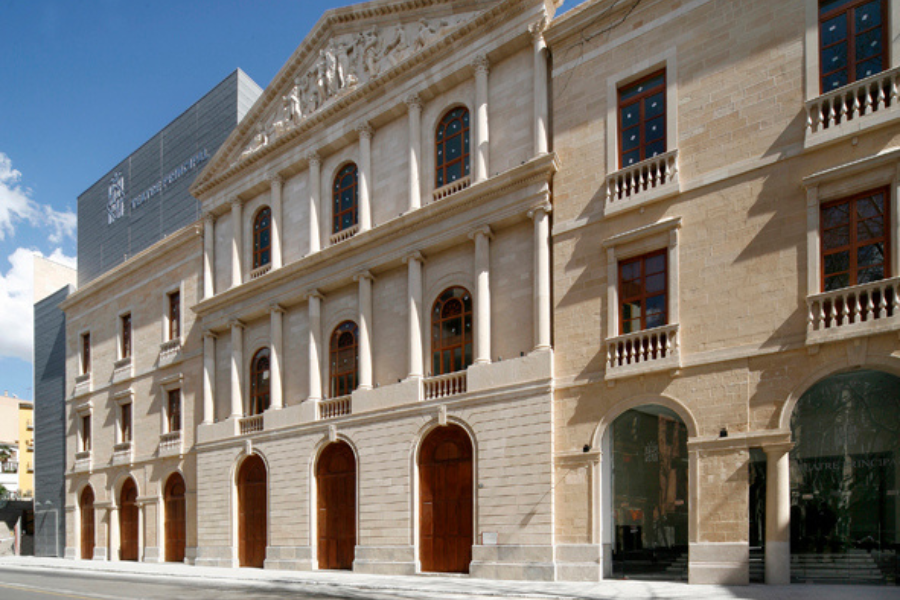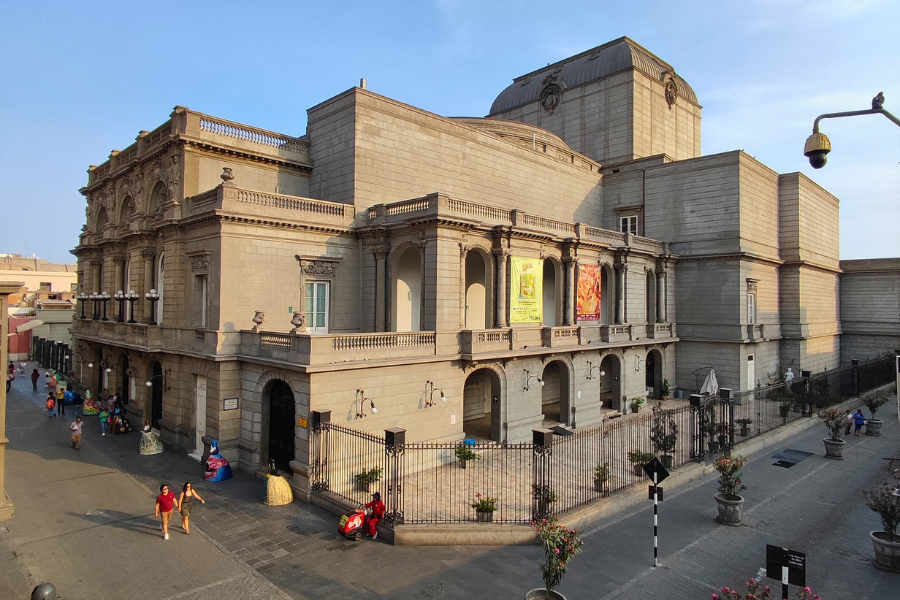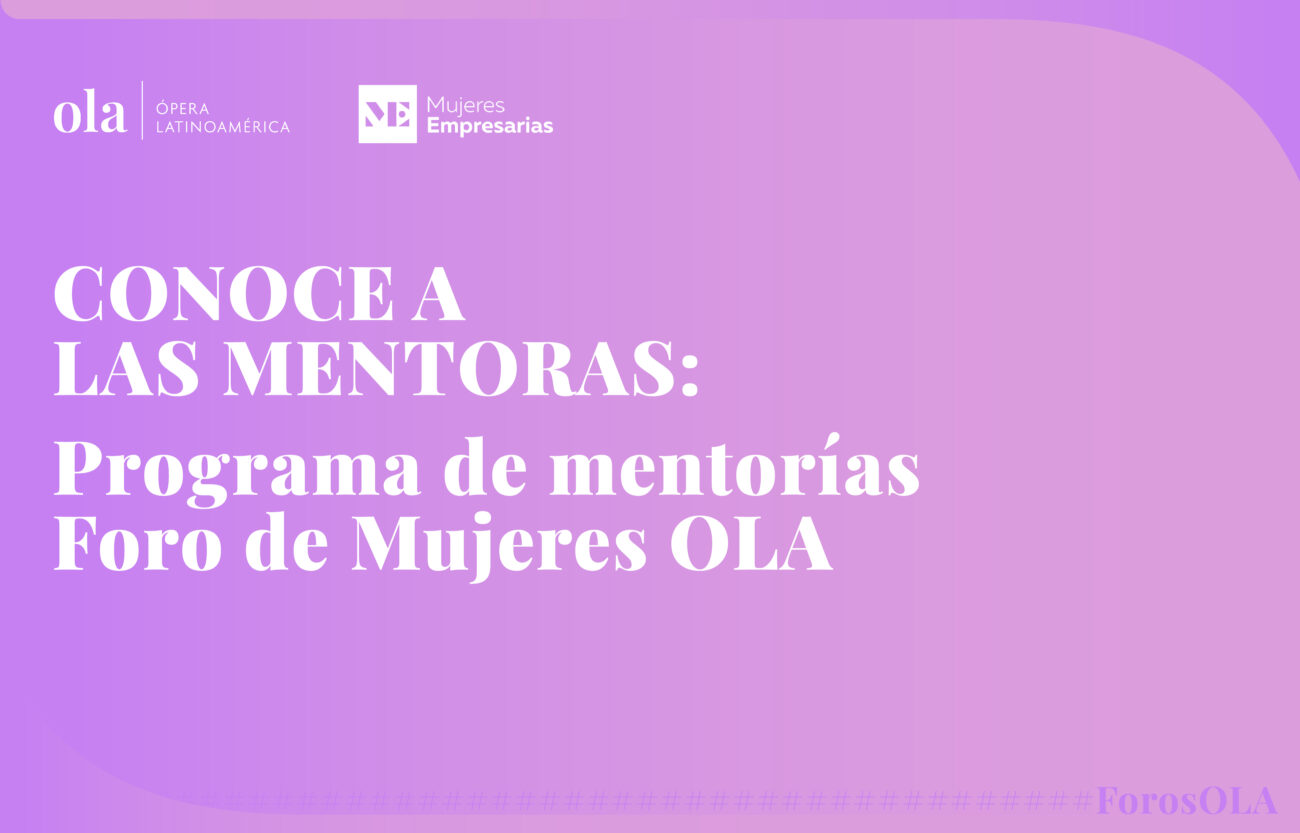El Teatre Principal de Palma, Mallorca, se une a Ópera Latinoamérica

Ubicado en el distrito céntrico de Palma, el Teatre Principal de Palma es el espacio de referencia para las artes escénicas en Mallorca. En el escenario de este tradicional centro artístico palmesano se programa teatro, danza y ópera, en temporadas que llegan a incluir un abultada oferta de más de 120 espectáculos. Además, acoge proyectos como una Escuela de espectadores para la formación de públicos, centros de creación, talleres y una plataforma propia de streaming, entre otras iniciativas culturales y educativas. Hoy, el teatro también se suma a la circulación de coproducciones líricas, con lazos que, recientemente, han llegado a, por ejemplo, el Teatro Roberto Plasencia Saldaña de México. “Creemos firmemente que las coproducciones son una forma de reducir costes y ampliar horizontes, por lo que estamos muy comprometidos con esa línea de trabajo”, comenta en esta entrevista Josep Cerdà, director del teatro.
El Teatre Principal de Palma, inaugurado en 1857, se erige como el centro de artes escénicas público más importante en el circuito cultural de Mallorca. A lo largo de su historia, el teatro ha acogido temporadas con diversas disciplinas como obras dramáticas, danza, música, zarzuela y ópera y, actualmente, sus programaciones pueden llegar a ofrecer hasta más de 120 espectáculos.
Ahora, el Teatre Principal se convierte en el sexto teatro español en unirse a la red de Ópera Latinoamérica (OLA). “Creemos que esta unión nos abre un abanico de posibilidades de colaboración con otros teatros de ópera que nos parecen muy oportunas en unos momentos en los que la sostenibilidad supone uno de los mayores retos de cualquier institución cultural”, explica Josep R. Cerdà, director del Teatre Principal.
Visita aquí el perfil de Escena Digital del Teatre Principal de Palma
Los orígenes del Teatre Principal de Palma se remontan al siglo XVII con la inauguración de la Casa de las Comedias, una iniciativa ciudadana para la representación de obras cómicas. Años después, durante el siglo XIX, se comenzó a construir un nuevo edificio que se inauguró en 1857 con el nombre de Teatro de la Princesa, en honor a Isabel de Borbón y Borbón, princesa de Asturias. En 1860 fue renombrado como Teatro del Príncipe de Asturias, pero después de la Revolución de 1868 que destronó a la reina Isabel II, el edificio obtuvo el nombre con el que se conoce hasta hoy.
Acercando a los públicos
Además de sus producciones líricas y artísticas, el Teatre Principal alberga a cuatro coros que protagonizan la oferta musical y lírica del teatro, un área educativa que cuenta con una Escuela de espectadores, recursos para las aulas de escuelas, tutorías teatrales y visitas guiadas y, además, una propia plataforma de streaming que sirve como panel de exhibición de sus producciones propias.
“Cada vez hay más audiencia interesada en profundizar en los espectáculos de nuestra programación”, comenta Josep R. Cerdà. El dramaturgo, director teatral, gestor cultural y profesor de lengua y literatura dirige desde 2019 el Teatre Principal y, junto a la directora adjunta, Marta Ferré, han elaborado un plan “basado en el compromiso y acompañamiento de la creación, para que producciones y coproducciones sean un referente dentro y fuera del territorio”.
«Las coproducciones son una forma de reducir costes y ampliar horizontes, por lo que estamos muy comprometidos con esa línea de trabajo.»
El plan además contempla enfoques para una programación diversa, plural, accesible e inclusiva y el “acercamiento a la ciudadanía a través de proyectos educativos, con especial incidencia en los jóvenes”.
En esta entrevista para Ópera Latinoamérica, Cerdà profundiza en la unión del Teatre Principal de Palma a la red de OLA, explica algunos de los proyectos educativos que desarrolla el teatro y adelanta la programación lírica que ofrecerá la próxima temporada de ópera.
¿Por qué el Teatre Principal de Palma decidió unirse a Ópera Latinoamérica?
Ya mantenemos algunas relaciones (sobre todo en materia de producción teatral y residencias artísticas) con Sudamérica y queremos ampliarlas. Nos admira la vitalidad y dinamismo de la escena cultural en Latinoamérica y queremos formar parte de ella.
Además, creemos que eso abre un abanico de posibilidades de colaboración con otros teatros de ópera que nos parecen muy oportunas en unos momentos en los que la sostenibilidad supone uno de los mayores retos de cualquier institución cultural.
¿Qué lugar tiene el Teatre Principal en la vida cultural de Mallorca? ¿Cómo se acercan a los diferentes públicos de la comunidad?
Somos el teatro de referencia en Mallorca. El único centro de producción público de espectáculos de teatro, danza y ópera. Esto nos diferencia de la abundante oferta privada de teatros exhibidores que hay en la isla. La ubicación y arquitectura histórica de nuestra sala también son un elemento patrimonial que sitúa al teatro en un lugar especial.
Debido a la alta rotación de espectáculos (más de 120 por temporada), nuestro público ya es de por sí muy diverso. Tenemos además un departamento de mediación que coordina los diversos programas de captación de nuevos públicos, tanto en el ámbito educativo como en la relación del teatro con la comunidad y con colectivos desfavorecidos.
El teatro tiene un área de educación en la que destaca la ‘Escuela de espectadores’. ¿Podrías explicar en qué consisten los proyectos de esta escuela? ¿Cuáles han sido los principales desafíos? ¿Qué resultados han tenido?
La Escuela de espectadores acoge al público interesado en profundizar en los espectáculos de nuestra programación, con coloquios y debates al final de las funciones. Cada vez hay más audiencia interesada en esa implicación, y últimamente se están uniendo grupos de lectura de bibliotecas o colectivos de otras ciudades.
Por otra parte, también está creciendo mucho la participación en el proyecto Tutorías teatrales, que pusimos en marcha con la colaboración de la consejería de Educación y que queremos ampliar hacia las áreas de música y danza en las próximas temporadas.
Los resultados de cualquier esfuerzo que hacemos para integrar a nuevos públicos siempre han superado las expectativas. Lo que cuesta es empezar, encontrar los interlocutores adecuados; pero una vez los proyectos ya funcionan, la demanda aumenta cada año.
Una mirada hacia Latinoamérica
¿Cómo se proyecta la programación lírica del Teatre Principal para este 2023? ¿Qué producciones o actividades líricas puedes destacar?
Hemos tenido L’Orfeo de Monteverdi, La Bohème y La Traviata, esta temporada. El primero de estos títulos se ha estrenado por primera vez en la Historia en Mallorca con esta producción propia, y los otros dos ya han agotado entradas y se han tenido que prorrogar.
Actualmente estamos trabajando en Il Trittico de Puccini como producción propia para la temporada que viene, a la que seguirán La forza del destino y Roméo et Juliette.
Nuestra temporada incluye también el concierto de Pascua, que sirve para dar la oportunidad a directores locales y diversificar las actividades de nuestro coro con otro tipo de repertorio.
Uno de los ejes de trabajo que promueve Ópera Latinoamérica es el trabajo en red a través de la coproducción, venta o alquileres de producciones entre los teatros que forman parte de la organización. ¿Cuál es tu expectativa de trabajo con el Teatre Principal y OLA en este ámbito?
Estamos deseando tanto coproducir como poder alquilar nuestras producciones con otros teatros. Ya tenemos la experiencia de hacerlo con México (donde se pudo ver nuestra producción de Don Giovanni dirigida por Pablo Azorín).
Creemos firmemente que las coproducciones son una forma de reducir costes y ampliar horizontes, por lo que estamos muy comprometidos con esa línea de trabajo. Para nosotros es muy importante empezar a hacer en Latinoamérica lo que ya practicamos desde hace algún tiempo en Ópera Europa.
Para dar a conocer nuestras producciones y coproducciones, además, disponemos de una plataforma de streaming propia, Principal a la carta a la que invitaremos a todos los miembros de OLA para que puedan ver nuestro trabajo en el ámbito digital.








